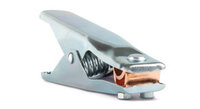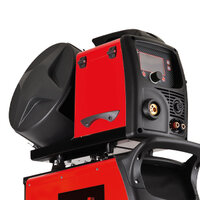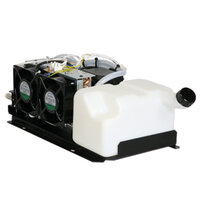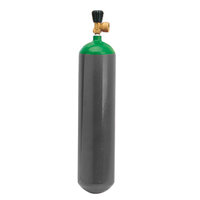ARC WELDING WITH CONTINUOUS WIRE
ELECTRODE WITH GAS SHIELD (G.M.A.W.) OR WITHOUT GAS SHIELD (FLUX or SELF-SHIELDED WIRE).
Continuous wire welding in a shielded atmosphere is often identified by the abbreviations M.I.G. (Metal Inert Gas) and M.A.G. (Metal Active Gas) or G.M.A.W. (Gas Metal Arc Welding). Continuous wire welding is a process in which the heat required to carry out the weld is supplied by an electric arc that is maintained between the piece to be welded and the wire electrode. The welding zone is constantly fed with the welding material (the wire electrode) by means of a special torch, which also supplies the flow of gas (or gas mixture) whose purpose is to shield the wire electrode, the weld pool, the arc and the area surrounding the base material from atmospheric contamination.The presence in the welding circuit of the gas cylinder (inert or active gas, or a mixture of the two) together with the use of solid wire electrodes, identifies the gas shield welding process (M.I.G. or M.A.G.).
The absence of the gas cylinder from the welding circuit, together with the use of tubular wire electrodes, identifies the welding process without gas shield (SELF SHIELDED WIRE, NO GAS or FLUX); in this case the gas shield is obtained by the action of the flux core contained in the wire.
- Nozzle
- Contact tip
- Wire-electrode
- Welding arc
- Gaseous protection
- Melting pool
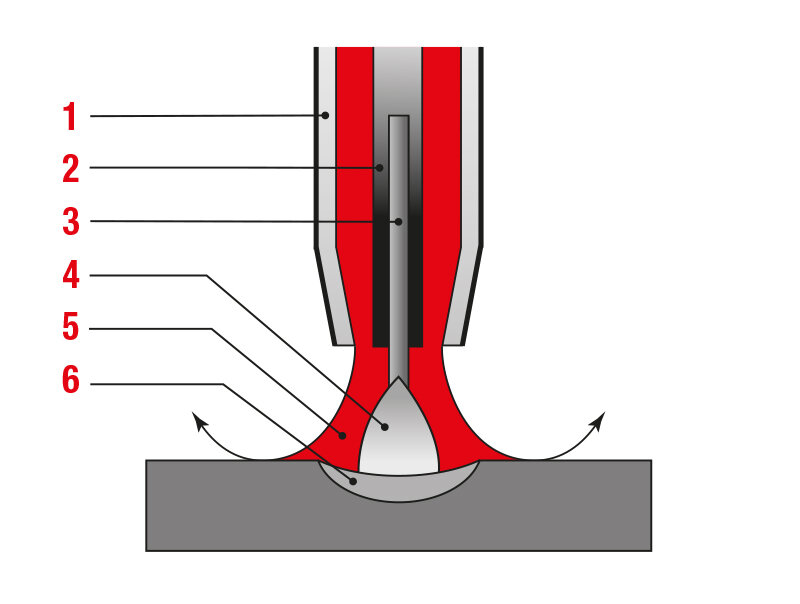
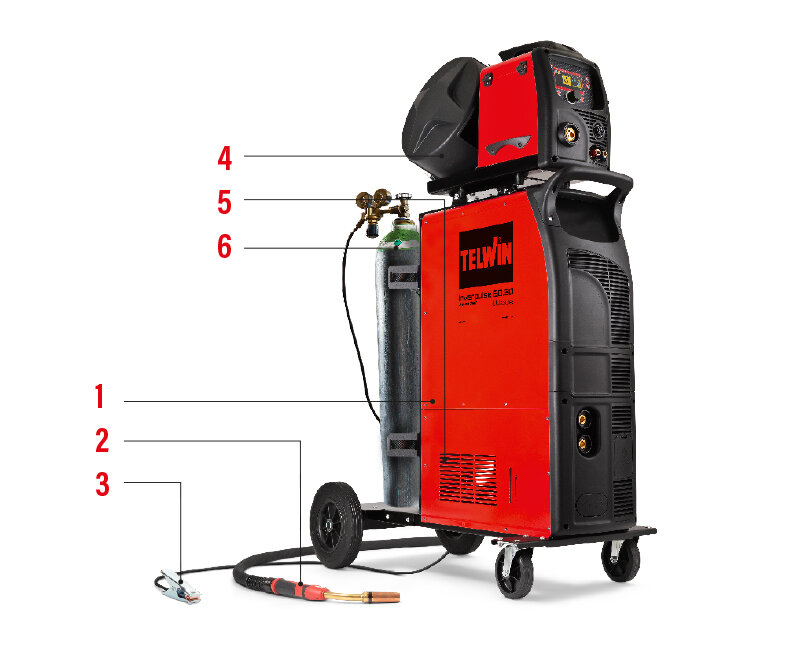
The welding circuit consists essentially of the following elements:
- POWER SOURCE
- TORCH
- EARTH CLAMP
- WIREFEEDER
- WATER COOLING SYSTEM
- GAS BOTTLE
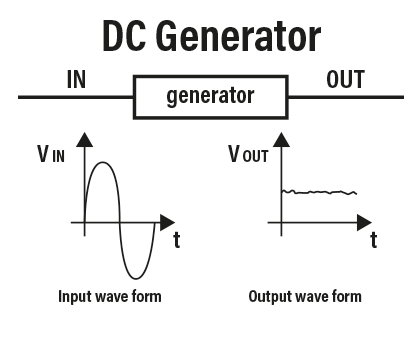
DIRECT CURRENT (DC) POWER SOURCE
Direct current power sources are the commonest power sources and are characterised by their high stability; this is because they are based on the fact that an electric arc will tend to stabilise naturally if it is powered at constant voltage and generated on a wire fed at a constant rate. Given the flexibility of the process, there is some flexibility in the choice of voltage and wire feed rate parameters. In this way it is possible to obtain drop transfer, from the welding material to the material to be welded, using either the "short arc" immersion procedure or the "spray arc" procedure.
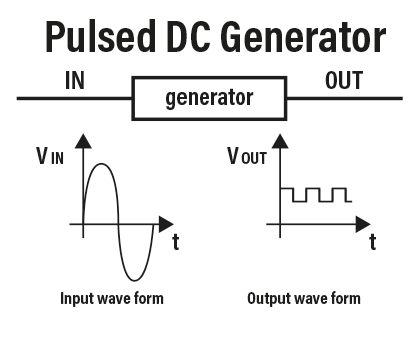
PULSED CURRENT POWER SOURCES
in this case it is not the voltage size that is regulated in the power source, but the current, which is not held constant but modulated with a train of impulses (hence the name "pulsed"). The purpose of the impulses is to force the drop to detach itself from the welding material; in this case the arc is not stabilised naturally, so that the impulses and wire feed rate must be perfectly synchronised to achieve an acceptable weld.
Both the in first and second case, at least two knobs are used for regulation; recent research in the industry has led to the development and marketing of "synergetic" type welding machines in which the operator uses only one control knob.
The manufacturer memorises the optimal welding parameters in the power source and these can be recalled and/or corrected by the operator, depending on the particular job requirements.
The different polarities when connecting the poles of the power source to the material to be welded identify two operating modes:
- Straight polarity connection
With electrode negative connection, the torch is connected to the negative pole and the material to be welded to the positive pole of the power source; this type of connection is only used in welding with tubular wire (FLUX).
- Reverse polarity connection
When welding with this operating mode, the torch is connected to the positive pole and the piece to be welded to the negative pole of the power source; this is the most frequently used type of connection.
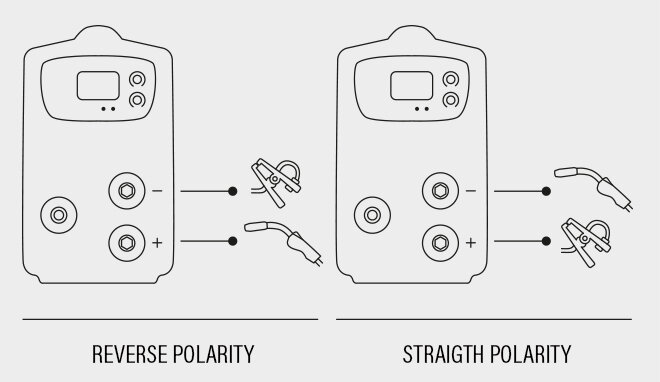


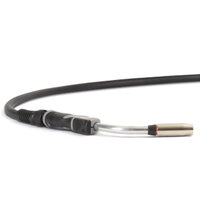 The torch, which is used to transfer the welding metal to the welding zone, has an externally insulated body and allows the passage of the wire electrode, the gas and the welding current. Its handgrip contains a control button for switching on the current, gas output and wire electrode feed.
The torch, which is used to transfer the welding metal to the welding zone, has an externally insulated body and allows the passage of the wire electrode, the gas and the welding current. Its handgrip contains a control button for switching on the current, gas output and wire electrode feed.